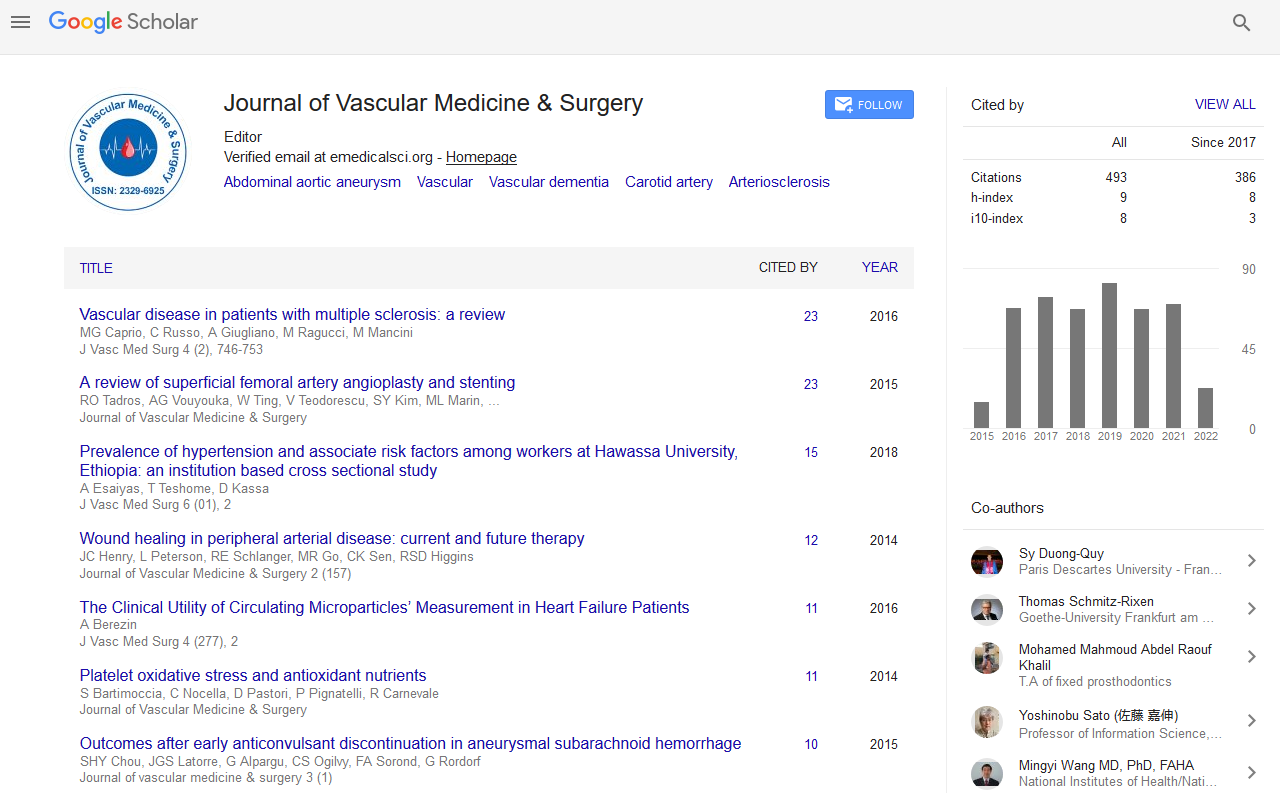Indexed In
- Open J Gate
- Academic Keys
- RefSeek
- Hamdard University
- EBSCO A-Z
- OCLC- WorldCat
- Publons
- Euro Pub
- Google Scholar
Useful Links
Share This Page
Journal Flyer

Open Access Journals
- Agri and Aquaculture
- Biochemistry
- Bioinformatics & Systems Biology
- Business & Management
- Chemistry
- Clinical Sciences
- Engineering
- Food & Nutrition
- General Science
- Genetics & Molecular Biology
- Immunology & Microbiology
- Medical Sciences
- Neuroscience & Psychology
- Nursing & Health Care
- Pharmaceutical Sciences
Abstract
A Novel Approach: Trans-Cholecyctic PTC and Malignant Biliary Stenting
Maaz Iqbal, Gronlie T, Gonda S, Joshi A and Iqbal S
Background: Percutaneous Biliary Cholangiography (PC) is the first step in a commonly employed technique utilized by interventional radiologist to relieve biliary obstruction via biliary stenting and drainage. A narrow gauge 22 gauge Chiba needle is utilized to gain access into the biliary tree via the right or left hepatic duct, followed by biliary imaging and intervention. Occasionally, access is limited into the biliary tree utilizing traditional methods due to decompression, variant anatomy, or other complications. Materials and methods: Magnetic Resonance Imaging (MRI), Computed Tomography (CT), and Flouroscopic images detail a case of a novel trans-cholecystic approach of biliary stenting and drainage in a patient with poor access to traditional methods and poor surgical candidate. Additionally, a full work up of the patient is presented to explain the presenting symptoms. Detailed history, relevant laboratory results, and hospital course are reviewed. Results: We present a Novel approach of biliary drainage utilizing the cystic duct as the entry point into the central biliary system. To our knowledge, this has not been previously described in literature and confers a tool for interventionists to gain biliary access on patients who are otherwise poor surgical candidates. Conclusion: We describe a case report of a novel approach for biliary access for cholangiography and subsequent interventions utilizing a trans-cholecystic approach. Familiarity with this approach can improve clinical outcomes and morbidity for those that are otherwise poor surgical candidates and present a challenge to interventionists via traditional access methods.


